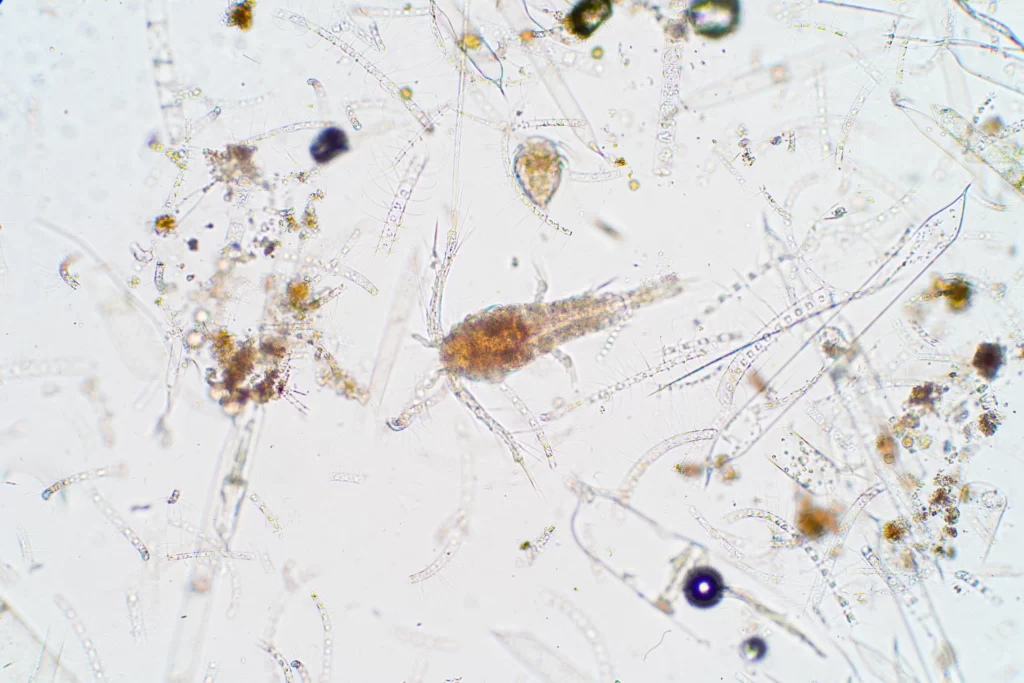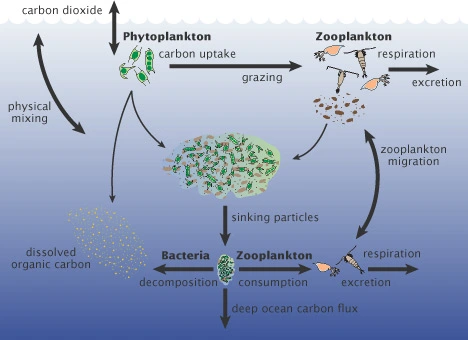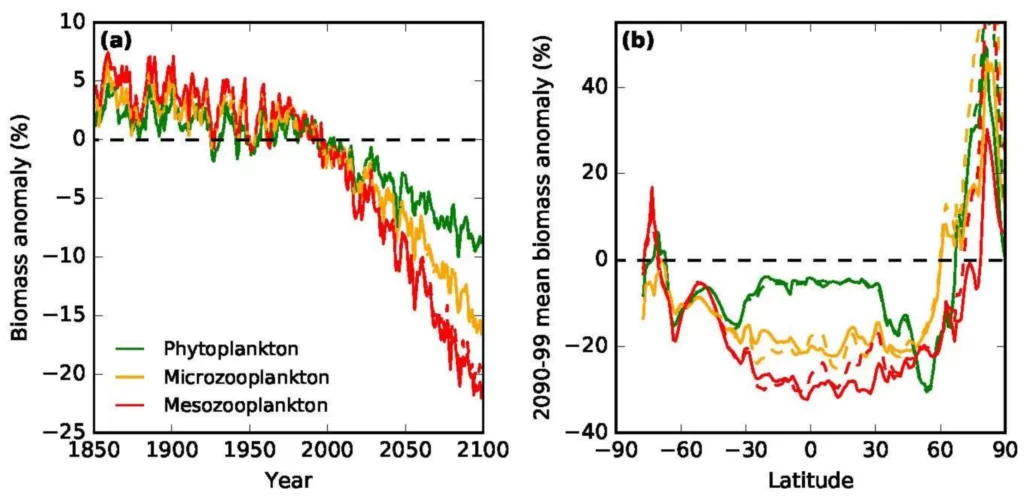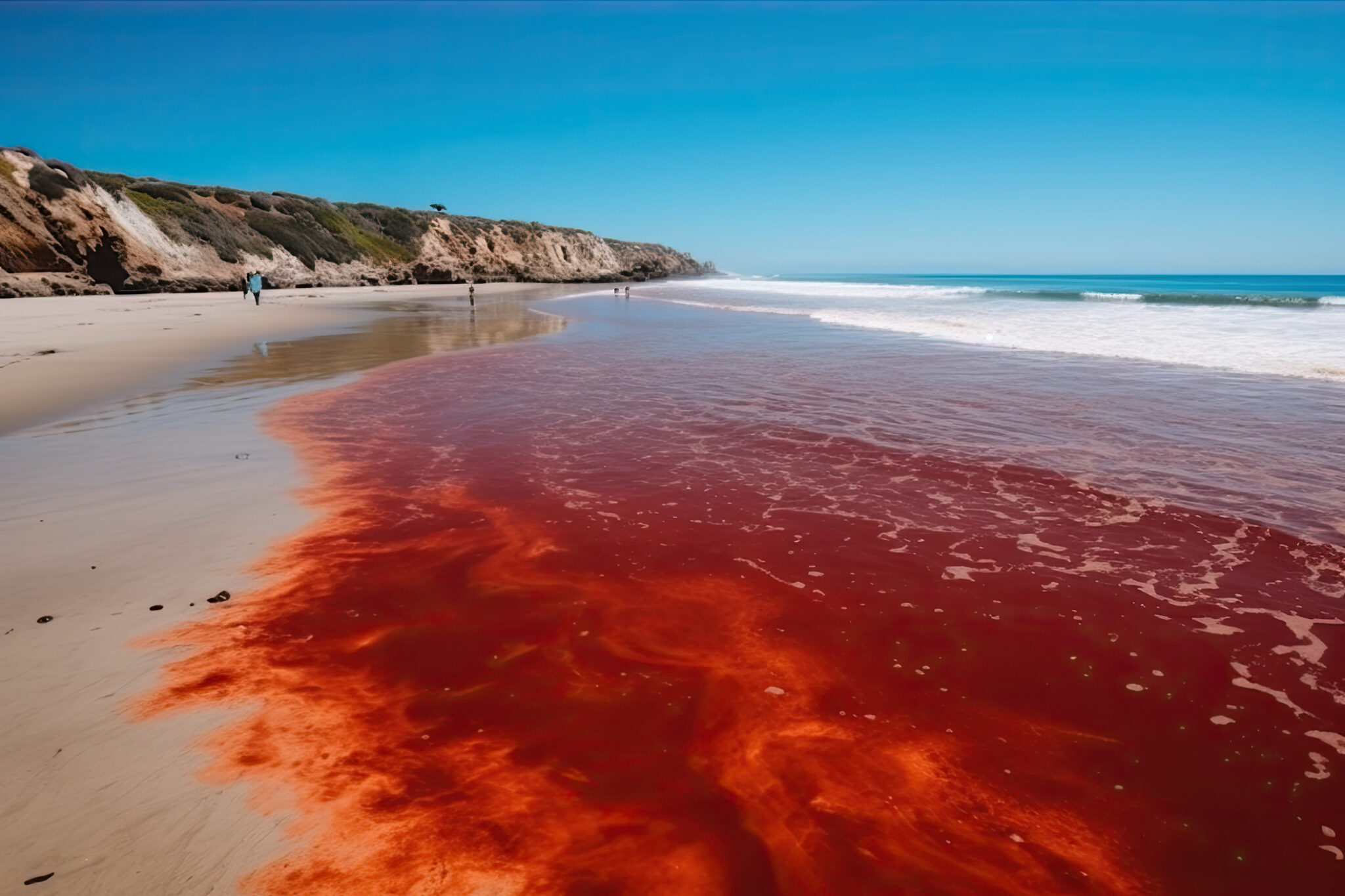The vast oceans that cover our planet are teeming with life, much of which remains invisible to the naked eye. Among these microscopic entities, phytoplankton stands out as ecological titans, playing a pivotal role in regulating Earth’s climate. This article delves into the intricate relationship between phytoplankton and our planet’s climate, exploring the profound impact of these minuscule organisms on the global stage.
Introduction to Phytoplankton:
Phytoplankton, derived from the Greek words for “plant” and “wandering” and often referred to as the “grass of the sea,” are microscopic marine plants that drift with ocean currents. They form the base of the marine food web, providing sustenance for a variety of marine organisms, from tiny zooplankton to massive whales. These tiny powerhouses play an instrumental role in maintaining the balance of our planet’s climate. But what is it about these minuscule organisms that grant them such significance in the grand scheme of Earth’s climate? Let’s embark on a journey into the depths of the ocean to unravel the mysteries of phytoplankton.
Many types of phytoplanktons are found each with its unique characteristics:
Diatoms: These are the prevalent types of phytoplanktons. Diatoms have silicate shells, that are incredibly productive and serve as a primary food source for many marine creatures.
Dinoflagellates: Often responsible for the phenomenon known as “red tide” or harmful algal blooms, it can produce toxins harmful to marine life. Some species can produce toxins that harm marine life and even humans.
Cyanobacteria: Also known as blue-green algae, these are some of the oldest known life forms on Earth.
Phytoplankton thrive in the sunlit upper layers of the ocean, where they photosynthesize, converting sunlight, carbon dioxide, and nutrients into organic matter and oxygen, much like terrestrial plants.

The Carbon Sink Phenomenon:
After the death of phytoplankton, they sink to the ocean floor, taking the carbon with them. Over time, this carbon gets buried in deep-sea sediments, effectively removing it from the atmosphere for millennia. This phenomenon, known as the “biological carbon pump,” is a natural mechanism that helps regulate atmospheric CO2 levels and, acts as a natural buffer against global warming.

This process of the “biological carbon pump” is crucial for regulating global carbon levels. It’s estimated that phytoplankton sequesters about 10 gigatons of carbon from the atmosphere annually, equivalent to the emissions of 2 billion cars!
The Ocean’s Climate Regulators:
Beyond their role in the carbon cycle, these have another climate-related trick up their sleeve. They produce a compound called dimethyl sulfide (DMS), which is released into the atmosphere. DMS is oxidized and transformed into sulfate aerosols, which act as nuclei for cloud formation.

Clouds have a dual effect on Earth’s climate. They can trap heat, leading to warming, but they also reflect sunlight into space, resulting in cooling. The balance of these effects depends on various factors, including cloud altitude, thickness, and droplet size. Phytoplankton, through DMS production, influence this balance, making them key players in climate regulation.
The Ripple Effect:
The health and distribution of phytoplankton populations have far-reaching implications for marine ecosystems and global climate patterns. For instance, a decline in it can lead to a decrease in zooplankton, affecting the entire marine food web.

Moreover, since it plays such a pivotal role in carbon sequestration and climate regulation, any changes in their populations can have direct implications for global temperatures, weather patterns, and sea levels.
Human Impact and Future Implications:
Human activities are disrupting the intricate dance between phytoplankton and climate. Overfishing, pollution, and global warming are altering the marine environment, impacting phytoplankton distribution and health.
Rising sea temperatures can shift phytoplankton populations, potentially disrupting marine food webs. Additionally, ocean acidification, a result of increased CO2 absorption by the oceans, can affect its ability to form shells, especially in the case of diatoms. A decline in phytoplankton diminishes their capacity to sequester carbon, exacerbating global warming.

As we move forward, understanding our impact on these microscopic plants becomes paramount. Their health is intrinsically linked to the well-being of our planet, and any disruptions can have cascading effects on global ecosystems and climate. We must take steps to protect them to ensure a balanced climate for future generations.
Conclusion:
Phytoplankton are more than just microscopic plants floating in our oceans. They are vital regulators of our planet’s climate and play a significant role in maintaining the balance of life both in the sea and on land. As we continue to face the challenges of climate change, understanding and preserving these tiny organisms will be key to ensuring a sustainable future.
Frequently Asked Questions (FAQs):
Q1: What are phytoplankton?
A: These are microscopic marine plants that drift in the ocean’s sunlit upper layers. They play a vital role in the marine food web and contribute significantly to the Earth’s carbon cycle.
Q2: How do phytoplankton affect the carbon cycle?
A: Through photosynthesis, these absorb vast amounts of carbon dioxide from the atmosphere, converting it into organic carbon. When they die, this carbon can sink to the ocean depths, effectively sequestering it for centuries.
Q3: What is the “biological carbon pump”?
A: The “biological carbon pump” refers to the process by which phytoplankton absorb CO2, convert it into organic carbon, and then transport it to the deep ocean when they die, thus removing it from the atmosphere for long periods.
Q4: How do phytoplankton influence global temperatures?
A: It produces a compound called dimethyl sulfide (DMS). When released into the atmosphere, DMS forms sulfate aerosols, which play a role in cloud formation. These clouds reflect sunlight, leading to cooling effects on the Earth’s surface.
Q5: How are human activities impacting phytoplankton?
A: Human actions, such as overfishing, pollution, and global warming, are altering the marine environment, which can impact phytoplankton distribution and health. Changes in sea temperatures and ocean acidification can also affect its populations.
Q6: Why are phytoplankton often referred to as the “lungs of the ocean”?
A: Phytoplankton produce about half of the world’s oxygen through photosynthesis, making them essential for life on Earth. Just as forests are considered the lungs of the land, they serve a similar role in the oceans.
Q7: What happens if phytoplankton populations decline significantly?
A: A decline in phytoplankton can disrupt the marine food web, affecting everything from tiny zooplankton to large marine predators. Additionally, since they play a crucial role in carbon sequestration and climate regulation, any significant changes in their populations can impact global temperatures and weather patterns.

